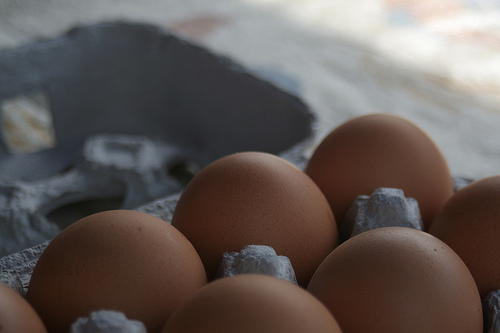
Whole Eggs Build Muscle Fast - They're The Best Source Of Protein
Eggs are among the best sources of complete proteins. They're cheaper than most meat per gram of protein, and they can be eaten a variety of ways: try taking a few hard-boiled to the gym, or scrambling a couple at breakfast. Eggs contain everything a chicken fetus needs to grow big and strong enough to break out of the shell. They're rich in trace element salts, good fats and vitamins as well as protein - each egg on average contains about six or seven grams of protein, which is pretty good going. But there's more: the protein in eggs is more biologically available than the protein in other foods, including milk and beef. That means less of it is required for more anabolic results. One caveat, though: with eggs, quality makes a huge difference. The price difference between the cheapest eggs and the best ones is reflected in the quality of the egg. Cheap ones are pale off-white yellow; eggs from well-fed hens are deep, bright orange, dyed that way by a higher nutrient content. Spend more and eat less of them, and you're getting more of the nutrients you need.

Chicken Breast And Turkey Breast: Ideal Sandwich Fillers
In the backlash against red meat in the eighties and nineties, chicken and turkey, with their high protein content and low fat, came to the fore, and they kept that place for reasons of convenience as well as nutrition. Both chicken and turkey make good sandwiches, can be added to salads and will slip into most recipes like curries, stews, stir-fries and grills with ease. Chicken is the more calorific meat: three ounces, about 100 grams, of chicken contains 165 calories, 35 of which are from fat, and 26 grams of protein. The same amount of turkey has 90 calories, 10 of which are from fat, and 14 grams of protein.
- Important notification about information and brand names used in this slideshow!
- Photo courtesy of John Herschell by Flickr : www.flickr.com/photos/allthingschill/462171444/
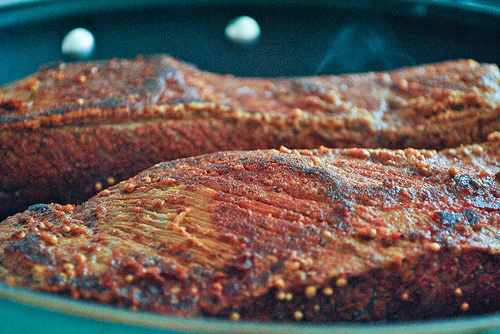
Grass-Fed Beef Means Better Nutrition And More Muscle
What's the distinction between grass-fed beef and ordinary beef? Well, the major one is that cattle have been made to eat grains and other foods in modern feed lots, to fatten them before slaughter. But that's not the diet or the life that cows evolved for, and our interference in their evolution still hasn't produced an animal that thrives on a diet of growth hormones, antibiotics, reclaimed animal tissue, and grains. Neither do we, for that matter. And we aren't just what we eat; we're what the animals we eat eat too. Grass-fed beef is leaner, more nutrient rich, free of persistent residues from the junk conventional cattle are fed and more anabolic.
- Important notification about information and brand names used in this slideshow!
- Photo courtesy of cookbookman17 by Flickr : www.flickr.com/photos/cookbookman/6881392197/
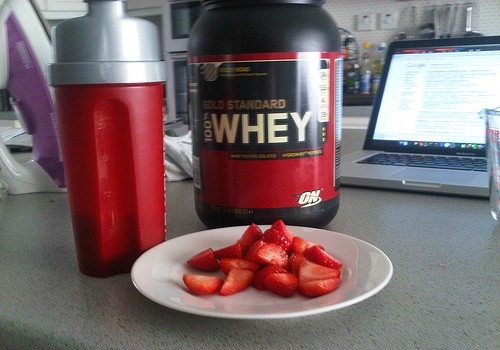
Whey Protein For After Workout Nutrition
Whey protein is one of the most popular supplements on the market, possibly the most popular. Whey protein is a by-product of the cheese industry, while the caseins in milk are retained in the cheese, and casein is the major protein allergen in milk, meaning even if you can't tolerate milk you might be OK with whey protein. If you're lactose intolerant, get whey isolate, not whey concentrate. There's some evidence that whey protein can help protect against some cancers, though that comes from preclinical trials on rats. More certainly, it's highly anabolic and bioavailable, easy to get and store, and cheap enough that you can take lots of it. Eat a high protein diet and supplement it with whey for protein saturation, giving your body a muscle-building environment, or use it for post-workout nutrition.
- Important notification about information and brand names used in this slideshow!
- Photo courtesy of Tomos by Flickr : www.flickr.com/photos/tomoswyn/5812447532/
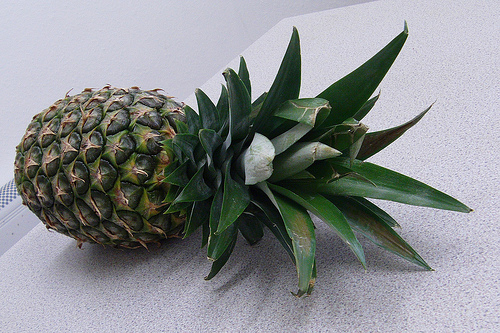
Pineapples Are An Aid To Recovery, Reducing Inflammation And Pain
Pineapples might not be a muscle builder in their own right, but they're a great aid to recovery. They're packed with Bromelain, a natural anti-inflammatory with analgesic properties which can help with treating bruises and sprains. It's also implicated in reducing postoperative swelling and the symptoms of rheumatoid arthritis. Pineapples also reduce your risk of getting an injury in the first place, because of their high vitamin C content. This helps connective tissue to repair itself, protecting against sprains and tears as well as tendonitis, and there's some evidence that pineapples can help protect you against tooth and gum decay too!
- Important notification about information and brand names used in this slideshow!
- Photo courtesy of Richard North by Flickr : www.flickr.com/photos/richardnorth/6884726718/
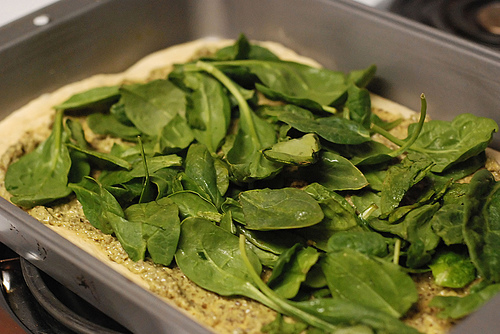
Spinach Really Does Make You Stronger, Letting You Build More Muscle
For many years spinach was thought to be a powerhouse of iron content, but this myth was later found to have been due to a wartime clerk putting a decimal point in the wrong place! In fact spinach has an iron content in line with other dark green leafy vegetables: respectable but soundly whipped by blackstrap molasses, some curries and especially, of course, by red meat. What spinach really does have is nitrates. Nitrates have been found in tests on rats to increase the content of two proteins in the muscles, CASQ1 and DHPR, and this is thought to be the mechanism by which nitrates increase muscle strength. The increase in strength is quite noticeable, according to Dr. Andrez Hernandez, a researcher at the Department of Physiology and Pharmacology at Karolinska Institutet in Sweden, and 'from a nutritional point of view our study is interesting because the amount of nitrate that affected muscle strength in mice was relatively low.' There are currently no supplements containing nitrates on the market: so serve spinach with your beef for arms like Popeye!
- Important notification about information and brand names used in this slideshow!
- Photo courtesy of Lisa Brewster by Flickr : www.flickr.com/photos/sophistechate/3014656049/
- O'Meara, Sarah, 'Why Popeye Got it Right: Spinach Does Help Build Muscle,' Huffington Post UK, June 26, 2012, stored at http://www.huffingtonpost.co.uk/2012/06/26/health-spinach-muscles-nitrate_n_1626613.html, retrieved July 19, 2013
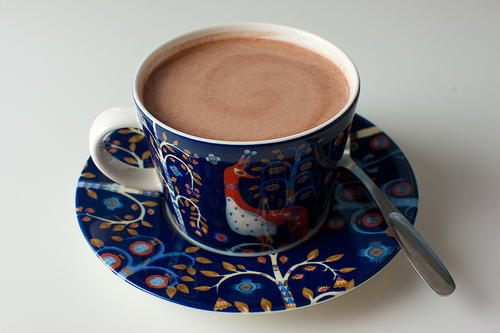
Chocolate Milk For Periworkout Nutrition With Convenience
Chocolate milk is the go-to training food for people trying to gain weight. First it's based on milk, which is high in protein, anabolic and a great recovery drink. Then it's thickened with starches and flavored with sugars, meaning big piles of bioavailable carbs to replenish burned glycogen stores. That makes chocolate milk a good approximation of a workout shake. It's a particularly good choice for longer training sessions as a periworkout nutrition choice, making longer efforts more possible and helping to prevent catabolysis, the process by which your body metabolizes muscle tissue in response to stress.
- Important notification about information and brand names used in this slideshow!
- Photo courtesy of Jukka Zitting by Flickr : www.flickr.com/photos/jlz/4169031076/
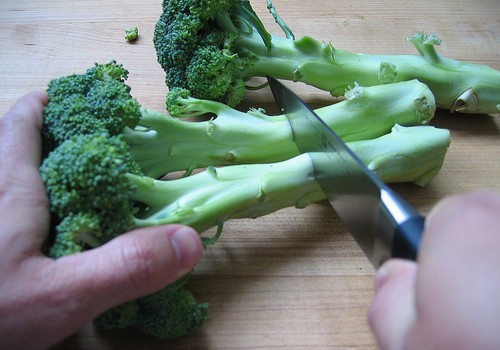
Broccoli Mops Up Inside Your Body, Helping You Get Bigger Faster
When you're trying to put on muscle, it's not unusual to hold off eating things like broccoli because it can cause you to feel full sooner, as it;s high in fibre and low in calories. But broccoli can help in building muscle by reducing your body's oestrogen content. How does it do that? High levels of Indole-3-carbinol and D-glucaric acid bind to the estrogen molecule and allow it to be secreted. But it doesn't just work on natural estrogens: it can also bind to xenoestrogens or pseudoestrogens, substances taken in from outside the body that can mimic the estrogen molecule, disrupting the body's hormonal balance. That's particularly important for women, because estrogen-mimicking substances usually don't actually do any of the jobs estrogen does, they just fool the body into thinking it has enough already, so your production of estrogen and testosterone falls.
- Important notification about information and brand names used in this slideshow!
- Photo courtesy of Cookthinker by Flickr : www.flickr.com/photos/cookthink/212024521/
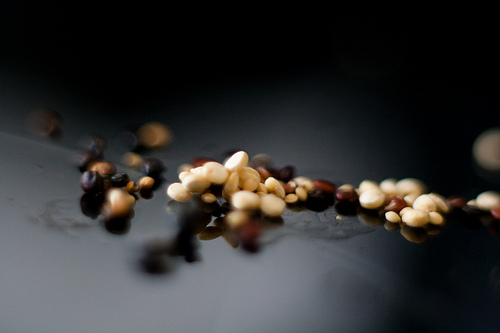
Try Quinoa For Slow-Release Carbs When You Need Them
Quinoa appears like a mix between rice and oats, but it's really one of the better grains to eat if you're trying to gain muscle. Quinoa is high in magnesium and iron, and unlike most grains quinoa's proteins are complete, meaning you don't have to play amino acid mix and match. A cup of cooked quinoa contains 254 calories, 4 grams of fat, 47 grams of carbohydrates, and 9 grams of protein, making it a low-fat way to get some quality carbohydrates. It's important to eat sufficient carbohydrates; too often, people trying to gain weight are obsessed with protein but neglect carbohydrates and the result can be that your protein intake is metabolized for energy instead of being put to work building muscle. Let quinoa help.
- Important notification about information and brand names used in this slideshow!
- Photo courtesy of Judit Klein by Flickr : www.flickr.com/photos/juditk/8593832940/
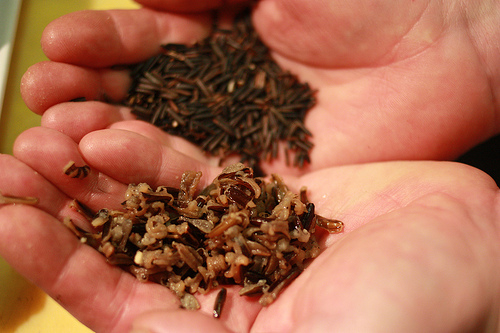
Wild Rice Is A Great Alternative To Brown Or White Rice
Wild rice is a great alternative to white and brown rice in a diet designed to gain weight. Wild rice can be a good source of long-chain carbohydrates, which will be absorbed more slowly than short-chin ones and therefore will cause less blood sugar spikes and offer more fuel for longer. Wild rice is typically about twice as long as brown rice and remains spongy and chewy when cooked. Try cooking it in a little oil after boiling it or adding lemon juice for flavor. A cup of cooked wild rice has 3 grams of fiber and 7 grams of protein.
- Important notification about information and brand names used in this slideshow!
- Photo courtesy of WFIU Public Radio by Flickr : www.flickr.com/photos/wfiupublicradio/5411495136/




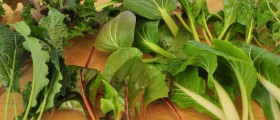


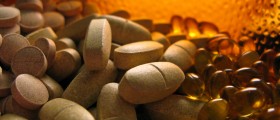
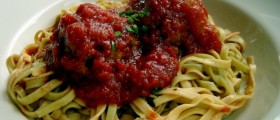


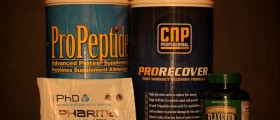
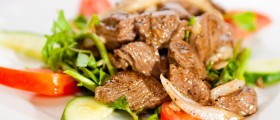
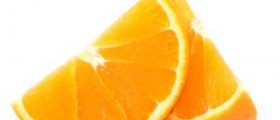
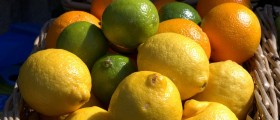
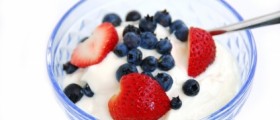
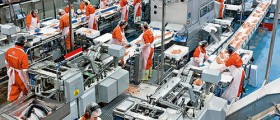

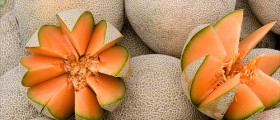
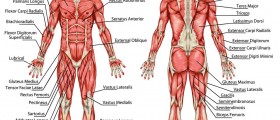
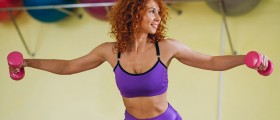
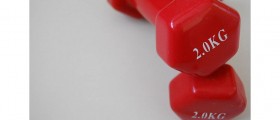
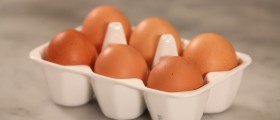
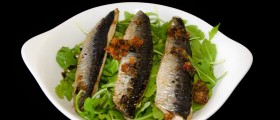
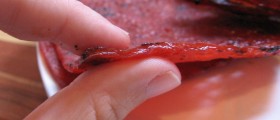
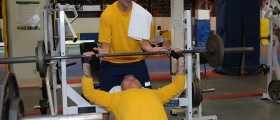

Your thoughts on this
Loading...